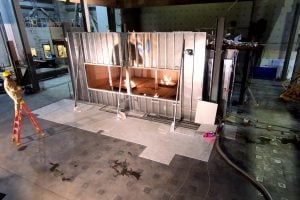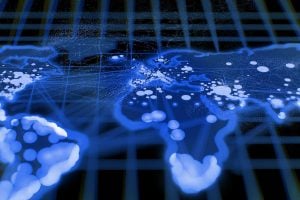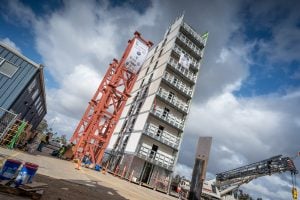Communities rely on infrastructure, technologies, and policies that shield, protect, and keep inhabitants safe from natural and anthropogenic hazards. One dimension of this is ensuring public safety during increasingly extreme natural hazards like fires, earthquakes, hurricanes and tsunamis, through the design of a more resilient infrastructure. Human-caused hazards, such as dirty bombs, biohazards, directed-energy weapons, and hypersonic missiles are also a major concern.
Providing safety and security in the face of such threats requires novel solutions grounded in highly sophisticated computational models, risk-based practices, and rigorous optimization approaches. Departmental faculty members are broadly recognized and funded by many government agencies and associated industries for their innovative research supporting national security, including – among others-the Air Force Office of Scientific Research, the Army Research Laboratory, the Office of Naval Research, Pratt & Whitney, the National Science Foundation and the Department of Energy.
With the core value of protecting and preserving the sanctity of human life and society, we aim to design and build technologies, policies and infrastructure that are robust to evolving threats, from a changing climate, to an act of war, to a global pandemic.
RESEARCH EXAMPLES
- Somnath Ghosh’s research team (CMRL) develops high-performance computational methods and codes for modeling and designing materials and structures in various defense applications, including design of materials for stealth systems and devices. His research is funded by Pratt & Whitney, ARO, ONR, and AFOSR.
- Lauren Gardner’s research on f bio-secure mobility utilizes network optimization and mathematical modeling to improve understanding of disease dynamics as a complex function of transportation systems, land use, climate and population demographics. The outcomes of this research guide policy to mitigate the risks posed by infectious diseases.
- Tak Igusa is working with engineers at The Johns Hopkins University Applied Physics Laboratory on agent-based models for national defense systems as a complement to current systems engineering approaches.
- Thomas Gernay’s research team develops computational models for assessing the response of materials and structures under extreme thermal environment. These research outcomes advance safer and resilient designs for the built environment under extreme hazards, from nuclear accidents to fire events.
- Kimia Ghobadi‘s research on developing mathematical frameworks for inference models can be used in recognizing key factors that resulted in specific outcomes in network. For instance, key reasons for avoiding vaccinations in certain populations.
- Michael Shields’ research in high-performance computing based uncertainty quantification, through his software UQpy, enables the assessment of structural and material performance under extreme, yet rare, events for assessment of risk, reliability, and safety of complex, high-dimensional, and strongly nonlinear systems.
- Lori Graham-Brady’s research team has addressed safety and security through the lens of probabilistic modeling, including a number of applications such as improving materials for armor applications, analyzing the high-rate failure and fragmentation of concrete under blast, and developing stochastic materials models that enforce structural reliability.



